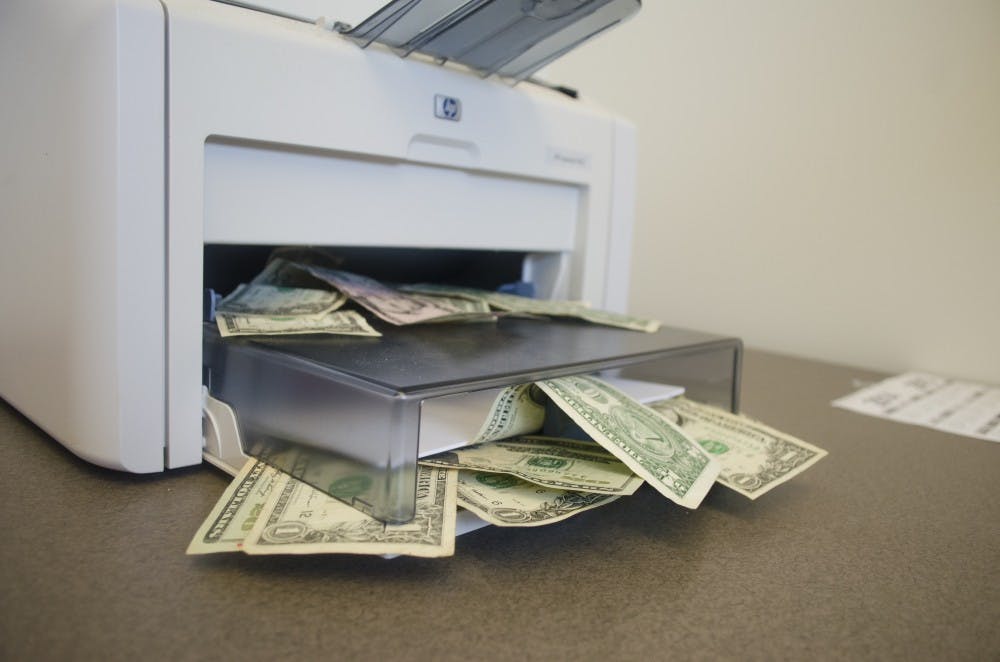Students and faculty might have to change the way they print on campus as the university takes a closer look at current usage.
Possible changes and policies will cut costs and standardize all printers on campus, and may remove some printers within university departments. The campus-wide moves are part of an agreement the university has made with Ricoh, a printing services company.
Matt Stephenson, director of business services, said the university is adopting Ricoh’s Manage Print Services “to make sure that we have the right type of equipment in the right place for the right uses.”
Before taking away printers, Stephenson said they will assess each department’s current print use.
“We’ll look at how many print output devices they have, how many printers they have ... and then going through and suggesting an optimized print solution,” Stephenson said. “That generally means getting rid of the smaller, more inefficient devices, the ones that are very expensive to operate and replacing those with more efficient devices, better technology, usually a lot more scanning.”
The goal is to remove the small personal printers because they usually aren’t as efficient as larger printers and tend to cost more per page.
“A lot of the small printers and desktop devices probably will go away with the print assessment,” he said.
The university plans to regulate the remaining printers in a way that will not make it difficult for faculty to do their jobs, Stephenson said.
“That’s why we’re taking so much time to go in and make sure we have an understanding of what the departmental processes are, what their work flows are, what they need to be able to do the jobs that they have,” Stephenson said. “We want to make sure that when we put equipment into the departments, that the right type of equipment is there for people to be able to do their jobs.”
The university did a study three years ago and found that it has about three times the amount of print equipment than what there should be according to industry standards.
“The reason for that is because there hasn’t been a lot of regulation over who can have printers, who can buy printers,” Stephenson said.
Stephenson said since there are multiple brands of machines, it makes printer use more expensive.
“All of those machines take ink and toner and supplies and maintenance, so part of the efficiency of the print management program is to standardize on one brand of equipment; in this case it’s Ricoh,” he said.
Departments will still have to pay for their printing, as they always have, but the new model for printing will be on a per-impression basis, Stephenson said.
There hasn’t been a campus-wide announcement of the program yet, but some departments have heard about the potential changes.
Olon Dotson, an associate professor of architecture, heard about the program from a colleague in the business college last spring, but didn’t think it applied to him.
“I thought it was a business college policy, but apparently it’s campus wide,” Dotson said. “They said it was going to be enforced soon and the business college was going to abide by it.”
Criminal justice and criminology professor Bryan Byers said he hadn’t heard anything about the program. Angela Hampton, an assistant elementary education professor, said she had heard about it, but she doesn’t mind since she doesn’t use her own printer.
Other universities have used the Managed Print Services program, like University of Miami, University of Pennsylvania and Clemson University.
University of Pennsylvania reduced printing costs during a four-month pilot program from $54,741 to $35,985 in one school, which is about a 34 percent reduction, according to upenn.edu. They did the pilot program in two other schools, and they reduced 15 percent in one and 23 percent in the other.





